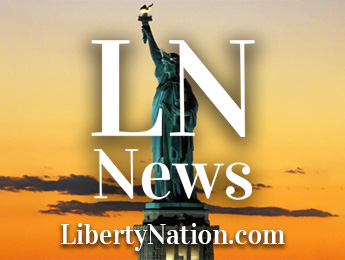Iran has entered its fourth day of anti-government protests. Demonstrators have taken to the streets in cities across the country to protest the nation’s economic situation and an over-emphasis on foreign policy at the expense of domestic issues. Rallies in Tehran have largely been quelled due to a hasty government response, but regional unrest continues.![]()
While the protests appear to have originated on a grassroots level, they have rapidly turned into a political tussle between Iran and the US. The Iranian government was quick to point the finger toward an “anti-revolutionary” agenda by the West, particularly America, whilst the Trump administration has taken the opportunity to censure Iran’s leaders.
POPULAR DISCONTENT
The protests began in Mashhad, Iran’s second largest city and one of the holiest locations in Shia Islam. Rallies spread across the country including to Tehran, only days after the capital suffered from an Earthquake that killed 500. Other affected cities include Ahvaz, Birjand, Hamadan, Isfahan, Kermanshah, Kashmar, Noushahr, Neyshabour, Sari, Rasht, Qazvin, Qom, Quchan and Yazd.
The original protests seem to have been based around complaints of economic mismanagement, rising food prices, and high unemployment but have since broadened into criticism of corruption, Iran’s involvement in regional conflicts in Syria, Iraq and Gaza, and general calls for regime change. High economic hopes as a result of Obama’s Iran Nuclear Deal have been dashed thanks in part to local corruption, and President Trump’s efforts to curtail the arrangement, leading to disappointment and public tension as inflation has affected the poorest.
Local reports and videos posted on social media have depicted crowds of young men congregating to protest the policies of President Hassan Rouhani, as well as the authority of Islamic leader Ayatollah Khameini. Slogans shouted by protestors focused on the economy with people calling, “The people are begging, the clerics act like God,” while others complained of an unfair focus on international politics saying, “Let go of Palestine,” “Leave Syria, think about us,” and “Not Gaza, nor Lebanon, my life for Iran.” Still more shouted for complete regime change with shouts of “Death to Rouhani,” “Death to the dictator,” and, “Seyyed Ali [Khameini] should be ashamed and leave the country alone.”
Shouts of “Long live Reza Shah” referred to the nation’s prior leader, indicating that some Iranians would like to return to an Iran before the takeover of the Islamic republic in 1979. It’s not clear how representative these sentiments are; although the protests have been widespread, the Iranian authorities have suggested that anti-government sentiments have been intentionally stirred up by extremists and counter-revolutionaries.
Some protestors have been arrested for shouting slogans and the intention to damage public property, while the government also subdued rallies with water cannons and tear gas.
AN AMERICAN PLOT?
The response by the Iranian authorities has been marked by paranoia as they immediately questioned the motives of protestors and suggested links to foreign meddlers.![]()
Iran’s First Vice President Eshaq Jahangiri, told state broadcaster IRIB that “Some incidents in the country these days are on the pretext of economic problems, but it seems there is something else behind them. They think by doing this they harm the government, but it will be others who ride the wave.”
Officials on the city of Mashhad said the protests were organized by “counter-revolutionary elements,” while a professor at Tehran University, Mohammad Marandi told Al-Jazeera that:
“…there is a concerted effort, I think, on behalf of the Western media outlets…We do see a very distinct effort on behalf of foreign governments. For example, BBC Persian which belongs to the British government, VOA which is owned by the US government and media outlets that are directly or indirectly funded by the West – they are showing an effort to expand the protests. They are trying to intensify them in order to politicise them.”
Tensions have been on the rise between Iran and the U.S. since Trump took over as President, and insults were being hurled even before these protests began. Ayatollah Ali Khamenei accused America last week of oppressing its own citizens on Twitter.
He further tweeted that the US government was sowing discord, but would be disappointed with the results:
The U.S. gov. commits oppression inside the U.S., too. U.S. police murder black women, men, & children for no justifiable reason, and the murderers are acquitted in U.S. courts. This is their judicial system! And they slam other countries’ and our country’s judicial system. #BLM
— Khamenei.ir (@khamenei_ir) December 27, 2017
U.S. govt spends a tremendous amount of money on sowing discord among people, and takes up the wealth of rich rulers in the region. By God’s Grace— they should know— we will progress powerfully. By God’s will, we will disappoint U.S. on all arenas.
— Khamenei.ir (@khamenei_ir) December 27, 2017
THE U.S. WEIGHS IN
While the Iranian government’s immediate response was to lay the blame on international rivals, rather than accept responsibly for its own failures, perhaps they aren’t completely paranoid. It’s certainly possible that the Trump regime sees this as an opportunity to push for regime change in Iran in favor of a more U.S. friendly option.
State Department spokesperson Heather Nauert responded to the protests by urging, “all nations to publicly support the Iranian people and their demands for basic rights and an end to corruption,” while President Trump expressed support for the protestors on Twitter:
Many reports of peaceful protests by Iranian citizens fed up with regime’s corruption & its squandering of the nation’s wealth to fund terrorism abroad. Iranian govt should respect their people’s rights, including right to express themselves. The world is watching! #IranProtests
— Donald J. Trump (@realDonaldTrump) December 30, 2017
While The Iranian and U.S. governments use these protests as another chance for political sparring, it is, unfortunately, the Iranian people who are likely to continue suffering as their needs are ignored in favor of international point scoring over whose country is the most oppressive.



